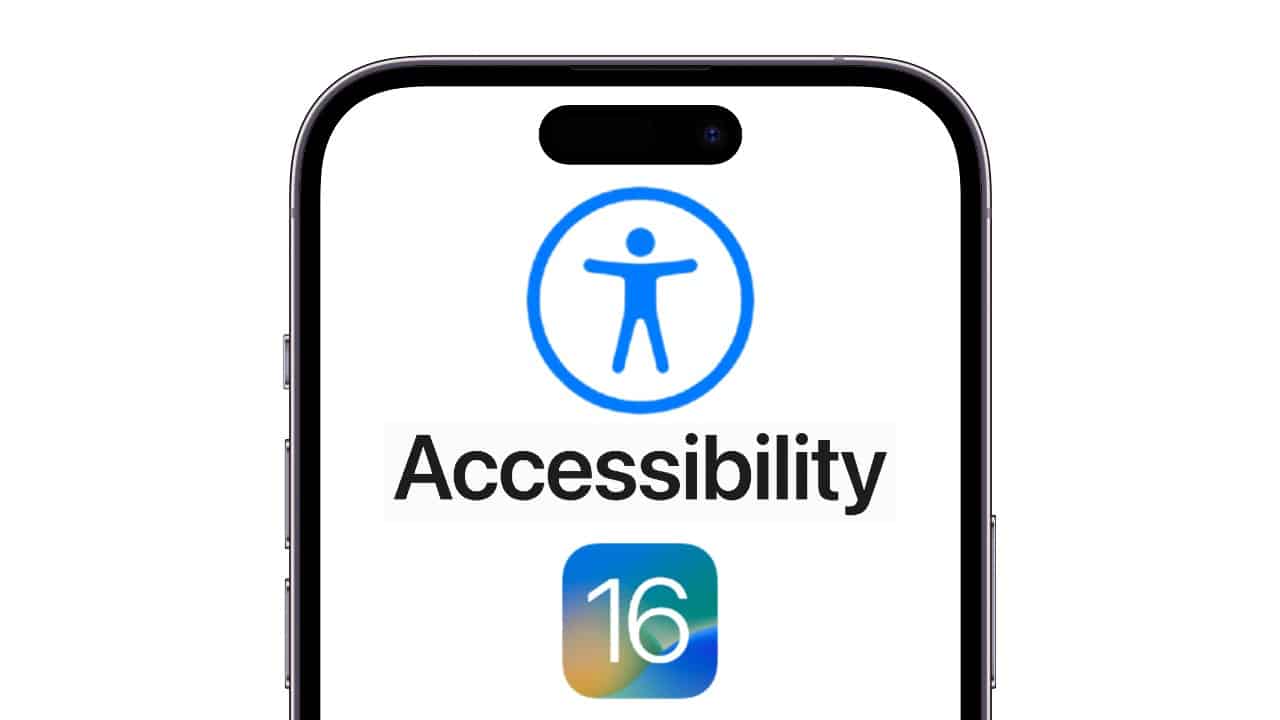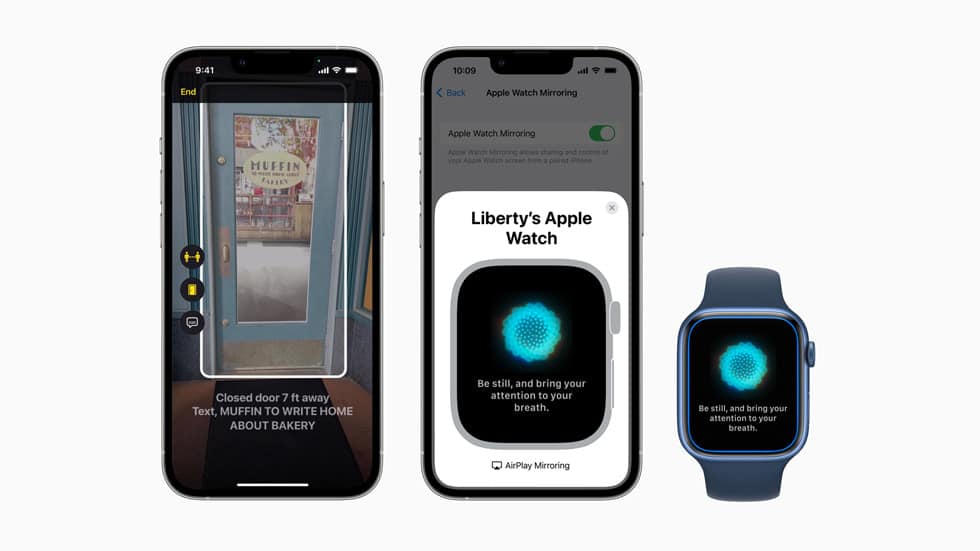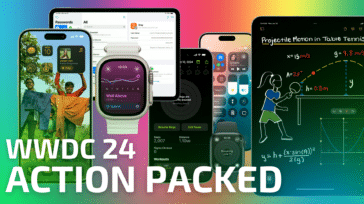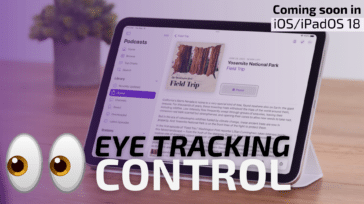
On September 12, 2022, Apple officially rolled out the official release of iOS 16. Debuted in June 2022 during the Worldwide Developers Conference, the latest iPhone operating system brings many changes and several new features and Rocket Yard’s iOS 16 Guide will take you through them all.
We’re kicking things off with this guide to the awesome new accessibility features, but over time we’ll be continuing the series with guides to the following:
- Live Text and Visual Lookup (Live Now)
- Siri and Dictation (Live Now)
- Maps (Live Now)
- Communication and Collaboration (Live Now)
- Focus Modes (Live Now)
- Redesigned Lock Screen
Apple prides itself on developing products that meet the needs of all kinds of users, and this includes people with disabilities—those with blind or low vision, deaf or hearing impaired, speech conditions, and motor impairment. As a result, they have made great strides in the arena of accessibility features for smart personal device such as smartphones, tablets, and watches.
“Apple embeds accessibility into every aspect of our work, and we are committed to designing the best products and services for everyone,” said Sarah Herrlinger, Apple’s senior director of Accessibility Policy and Initiatives in a press release. “We’re excited to introduce these new features, which combine innovation and creativity from teams across Apple to give users more options to use our products in ways that best suit their needs and lives.”
This year Apple has outdone themselves with a host of new accessibility features. Most of the features have been in beta testing since May 2022. And with the official release of iOS 16 today (Sept. 12), we will get to enjoy the final product.
How accessibility benefits everyone
Many inventions or features intended for accessibility have proven to be useful to others. For instance, implementing elevators in subway stations not only helps those with wheelchairs access public transport, but it also benefits the elderly who are likely to have harder time walking up stairs, people with baby strollers, those with temporary injuries, and tourists with huge suitcases.
The same goes for digital and smart technology. Although originally intended for the deaf and hard of hearing, captions are now a luxury I enjoy when watching Netflix. Thanks to captioning, I don’t miss any of the dialogue due to distractions, fast-talking actors, or accents.
The latest Apple accessibility features and updates this year will not only make a difference in the lives of many people with certain limitations, but they can also serve as tools of convenience for many others and elevate the iPhone experience for all.
New accesibility features on iPhone, iPad, and Apple Watch
Here is a complete guide to all of Apple’s latest accessibility features that help users with all sorts of tasks, such as navigation, connect, communicate, and take better advantage of Apple products.
Apple Books format customization
The reading experience on Apple Books is about to get highly personalized. Along with new themes, users can customize character, word, and line spacing; and text weight. This feature will help readers with all kinds of vision issues, in addition to neurodivergent readers.
Quick Action Gestures for Apple Watch AssitiveTouch
AssistiveTouch for Apple Watch is a magic feature that allows people with limb differences or limited mobility to access the watch without touching the screen. Well, it’s not magic—it relies on the watch’s optical heart rate sensor, gyroscope, and accelerometer to get a read of your muscle and tendon arm movement. However, this technology is clearly about to revolutionize change how we communicate with our devices.
So far the gesture have been only for navigating the watch menus. Unveiled with the release of iOS 16, AssistiveTouch gestures can be assigned to tasks or commands such as double-pinching to take a photo.
Apple Watch Mirroring

Similar to a midi keyboard controller, Apple Watch Mirroring now allows you to operate your Apple Watch from an iPhone or iPad. This far advances accessibility for Apple Watch users with motor and physical limitations.
Live Captions

Phonecalls, Facetime sessions, videos. Not only is this feature essential for who are deaf or hard of hearing but it is also useful feature for everyone. For instance, when take a call while waiting on the subway platform in NYC, I’m am constantly bombarded by the noise of passing trains. The ability to read a live transcription from my caller means I don’t have to pause my conversation for 30 seconds of awkward silence.
Buddy Controller
Not unlike the Xbox Copilot feature, two game controllers become one with “Buddy Controller,” allowing one person to help another play a game on their iPhone or iPad. Oftentimes, helping another person complete a task on their iPhone requires touching it, so this is also a cool feature if we continue to social distance.
Voice Control Spelling Mode
The dictation feature is amazing for anyone who has trouble seeing or typing on the keyboard. And it saves time to speak your thoughts when sending texts or emails. Now, this same feature will be enhanced with the ability to customize words by spelling them out letter-by-letter, which will prove useful for dictating proper names, words from other languages, abbreviations, and acronyms.
Siri Pause Time
Apple has been conducting research in an effort to get Siri to recognize and adapt to stuttered speech, In the meantime, Siri Pause Time presents somewhat of a solution. The feature is specifically for those with speech disabilities who find Siri interrupting them while they are still giving a command. Now users can adjust the length of time between their command and Siri’s response to accommodate their rate of speech.
Door Detection

Blind and low vision users will now be able to use their iPhone or iPad to locate a door and its attributes such as open or closed, push or pull, and knob or handle. This feature combines old and new technology—LiDAR, which has been around since the 60’s, fires out laser beams times their speed of return, while machine learning creates a detailed representation of the environment.
VoiceOver (more languages)
VoiceOver is Apple’s screenreader for blind and low-vision users, and it now supports new languages including Basque, Bulgarian, Catalan, Croatian, Farsi, Galician, Kannada, Malay, Marathi, Slovenian, Tamil, Telugu, Ukrainian, Valencian, and Vietnamese.
Sound Recognition
Your iPhone can now identify distinct sounds in your environment such as a doorbells, alarms, sirens, a baby crying, or a dog barking. How is this useful? People with hearing loss can set visual or vibrating notifications to alert them if the on-device intelligence determines that their car alarm may be going off. I could also see this coming in handy for teens alone at home buried in their phone with noise-cancelling headphones.
Siri End Call
Commanding Siri to answer a call was a godsend for many people with a variety of disabilities. It is also a very convenient feature for anyone with their hands full. Ironically, calls cannot be ended with Siri commands. The person with their hands full will eventually hit the big red button to end call, but for users with disabilities this has been problem. Now, with the release of iOS 16, you can simply say “Siri, end call.”
Auto-answer Calls setup
You may be unaware of this feature if you can easily reach your phone to answer calls. In Accessibility settings you can choose to have all of your calls answered automatically after a specific incoming duration. However, toggling the feature on or off required a certain amount of motor ability in past releases of iOS. Finally, as part of the iOS 16 final package, users will be able to adjust this setting hands-free.
Earphone-free “Announce Notifications”
Did you know you can have your notifications announced by Siri? An invaluable feature for those unable to access or read the notifications, it has been limited to operating with apple and beats headphones. Going forward notifications can be announced through iPhone’s speaker or MFI hearing aids.










Did Apple restore volume control for MFi hearing aids in the Watch Accessibility control? (Swipe up, touch the ear icon) This feature vanished 6 months ago and I have missed it!